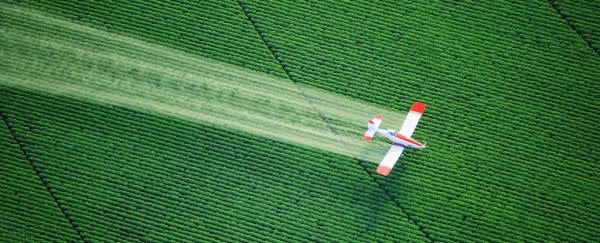Earth is a pretty big place, but it's not as big as our appetite.
That's the conclusion of a new study by researchers in Canada, who calculated that if the entire world population tried to eat what the United States Department of Agriculture (USDA) actually recommends, we wouldn't have enough farms to feed everybody.
"The data shows that we would require more land than what we have if we adopt these guidelines," says ecologist Madhur Anand from the University of Guelph in Ontario.
"It is unsustainable."
Of course, the USDA guidelines – at least the 2010 recommendations Anand's team based their calculations on – weren't intended for everybody. Just people living (and eating) in the US.
But perhaps future guidelines need to be drafted with a broader outlook, the researchers think, because the way we use the world's available arable land to feed global populations isn't a purely domestic issue.
And the kinds of food we should be eating need to be considered in relation to the environment that produces them, the team says.
"We need to understand human and environmental systems in a coordinated manner," Anand explains.
"This could be similar, at least in principle, to how greenhouse gas emissions are increasingly being coordinated internationally to address another major global problem: climate change."
In the team's calculations, if the whole world attempted to adhere to the USDA dietary guidelines, we'd be short about 1 gigahectare of farmland – about the size of Canada – under current agricultural practices.
Right now, the team says about 38 percent of the land on Earth is used for food production. The rest is either is either unsuitable for cultivation because of soil, climate topography, or urban development, or it's forest land.
Because we don't have more land to expand farming into, any gains in agriculture have to be made by more efficient agricultural methods – and given UN estimates suggest we'll need to produce 70 percent more food by 2050 to meet increased global demand, the pressure is on.
"One of the 21st century's great challenges is to develop diets that are both healthy for our bodies and sustainable for the planet," explains one of the team, food security researcher, Evan Fraser.
It's a challenge that will be easier for some countries than for others.
In their study, the researchers found evidence of a hemispheric divide, where some countries actually stand to free up vast reserves of farmland if their inhabitants were to adopt the 2010 guidelines – but others would run out of room.
"North America, South America and Oceania could spare significant amounts of land if they moved to the less meat-intensive (and consequently, grain-intensive) diet in the USDA guidelines," the researchers write in their paper.
"In contrast, Africa, the European Union, and Asia would require a significant expansion of agricultural lands to support a USDA guideline diet."
There's a lot more research to be done, but as far as the team is concerned, the time for thinking of health and the environment as separate things is well and truly over.
"This is one of the first papers to look at how the adoption of Western dietary guidelines by the global population would translate into food production… and specifically how that would dictate land use and the fallouts of that," says Anand.
"We need to look at diet not just as an individual health issue but as an ecosystem health issue."
The findings are reported in PLOS One.
